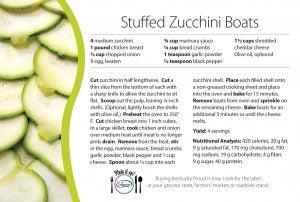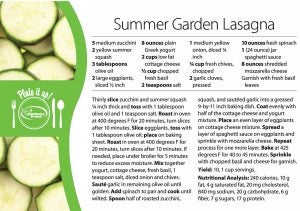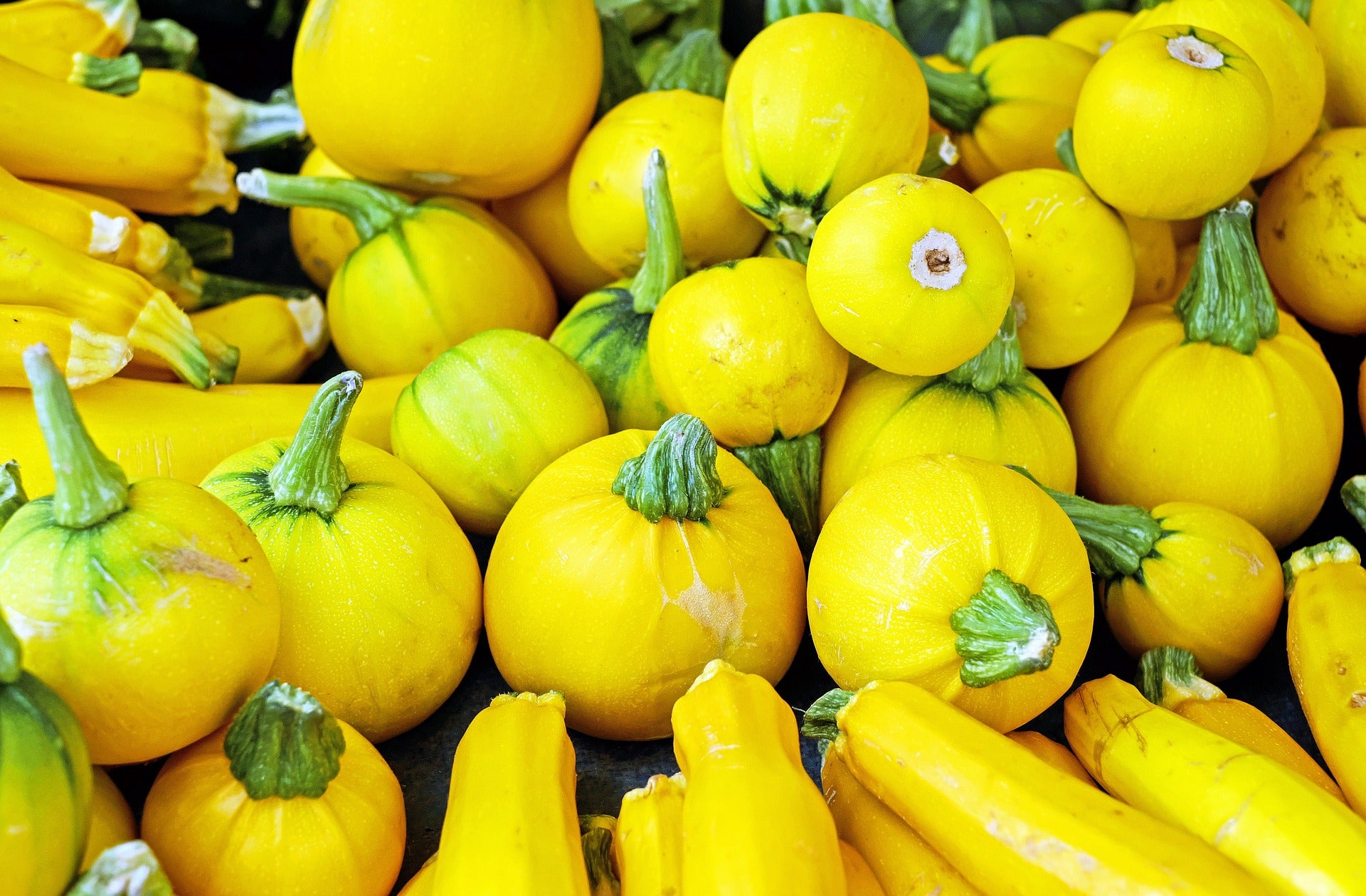The Kitchen Agent: Zucchini — and more
Published 7:23 am Wednesday, July 18, 2018
By Alethea Price
Boyle County Extension
A blossoming fruit we call a vegetable can be used in a multitude of ways
Editor’s note: This is the final in a series about summer squash.
Summer squash is taking over the farm-fresh scene. Rightfully so, summer squash is in season and it’s quite the trendy little fruit. Yes, it’s a fruit.
This fruit, vegetable — whatever you want to call it — is packed with vitamin C. It’s quite versatile, really, with all of its edible parts.
Harvesting
In Mexico, the summer squash blossom is preferred over the actual squash itself. It’s commonly added to dishes such as soups and quesadillas. Squash blossoms are edible flowers, raw or cooked. Both summer and winter squash blossoms can be used in many dishes.
Harvest only the male blossoms unless the goal is to reduce production. Male blossoms are easily distinguished from the female blossoms. The stem of the male blossom is thin and trim. The stem of the female blossom is very thick. At the base of the female flower, below the petals, is a small bulge which is the developing squash.
Harvest the male blossoms for cooking but always leave a few on the vine for pollination purposes. There are always many more male flowers than female. The female blossom can be harvested with a tiny squash growing at the end and used in recipes along with full blossoms. Use the blossom of any variety of summer or winter squash in your favorite squash blossom recipe.
Varieties
Kentucky offers many varieties of summer squash right here in our own backyard. Scallop or patty pan is round and flattened like a plate with scalloped edges, usually white but sometimes yellow or green. The constricted neck is thinner at the stem end than the blossom end, classified as either “crookneck” or “straightneck,” depending on if the stem end is straight or bent, and is usually yellow.
Cylindrical to club-shaped squash, such as zucchini, cocozelle and caserta, tend to be shades of green but may also be yellow or nearly white.

The most common varieties found right here in Boyle County include zucchini, patty pan and yellow squash. Be sure to try some of the other varieties sold locally. They’re in season so they are especially delicious.
Unfortunately, most people harvest summer squash too late. Like winter squash, summer squash is an edible gourd. The difference between summer and winter squash is when you harvest it. Summer squash is harvested in the immature stage, when the rind has not hardened. Ideally, summer squash should be harvested at 6 to 8 inches in length. Patty pan and scallopini are ready when they measure about 3 to 4 inches in diameter or less. Tiny baby squash are delicious too. Oversized squash can be used for baking or are great in the compost pile.
Tasty options, methods of cooking
To store summer squash, harvest small squash and place, unwashed in plastic bags in the crisper drawer of the refrigerator. Wash the squash just before preparation. As with most vegetables, washing days in advance of preparation can shorten the shelf life of the squash. The storage life of summer squash is brief, so use within two to three days.
July is producing plenty of zucchini in local gardens and is in abundance at farmers markets and farm stands. With so much zucchini on hand, what could we possibly do with it other than make bread? Man cannot live on bread alone, so here are some tasty options.
Zucchini, like most summer squash, can stand up to a variety of cooking methods. Steaming, grilling, baking and sautéing are all worth giving the old college try. Using fresh herbs such as rosemary can bump up the flavor any way you cook it.
Marinades work just as well on squash as they do on meat. Balsamic vinegar is definitely one to try next time you throw a foil pack of squash and mixed veggies on the grill or in the oven.

The best part about cooking with summer squash, there’s no need to peel it. Slice it up and add it toss it in your favorite soup and stir fry recipes. Raw zucchini pairs well with dips or as a tasty salad topper.
A new, extremely trendy way to eat zucchini is to make it into a pizza crust. This healthier, low-carb option is a sneaky way to get kids to eat their veggies. It also goes very well grated up in spaghetti sauce. Try spiraling zucchini through a veggie noodle maker for a carb free pasta alternative.
Canning is not recommended because the tender summer squash will simply turn to mush during processing, unless you are making pickles. Zucchini can be substituted for cucumbers in some pickle recipes. The results are especially good in your favorite recipes for bread and butter pickles. You can also use yellow squash to make pickles and relish. Be sure to use only research based recipes for canning.
Freezing is an easy way to preserve mass quantities of summer squash. Sometimes you have to blanch it first. To blanch, add squash to boiling water for three minutes. Remove from water and add to ice water to cool for a couple minutes. This process stunts the enzymes that cause decay.
Blanch and freeze cubes or slices of summer squash or grate and freeze zucchini, unblanched for making zucchini bread. The best way to use overgrown (10 to 12 inches) zucchini is to grate it and use in zucchini bread. Cut the squash in half lengthwise and cut away the seedy middle section. Wash, grate and freeze in one cup portions. Use zip closure freezer bags or rigid freezer containers leaving 1/2 inch head space. Try pre-measuring and packaging zucchini according to the amount your recipe calls for. When you get ready to make bread in the winter, you thaw out just the right amount.
Summer squash comes in all shapes and sizes and can be used in so many delicious ways. The most important characteristic to remember is that summer squash is best when immature, young and tender. Check out local vendors to see what types of squash they have available. It’s in season so there’s no better time to try something new.
If you have questions or comments about the column, or if you’d like more information feel free to contact me by email at a.price@uky.edu.






